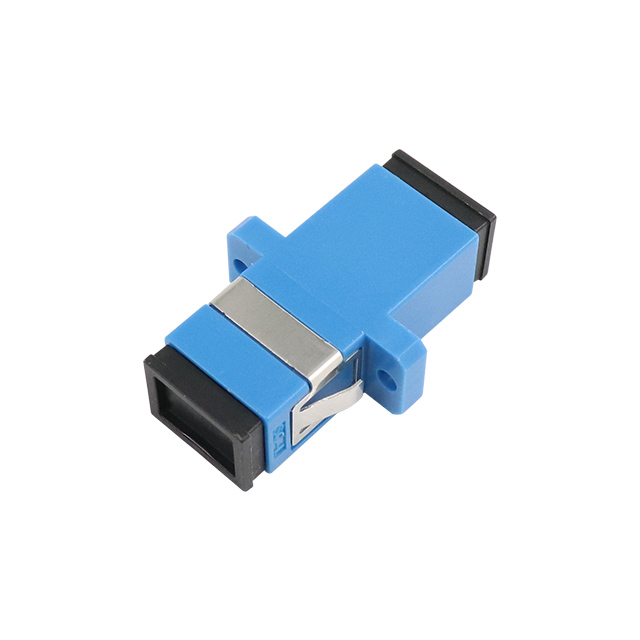What Are the Shielding Types of Network Patch Cords, and How to Choose the Right Shielded Patch Cord?
2025-01-09
Network patch cords are integral components in any wired network, used to connect devices such as computers, routers, and switches. These cords are available in various types, including both shielded and unshielded versions, designed to meet different performance and protection requirements. Understanding the different shielding types available for patch cords and how to choose the right one for your network needs can greatly enhance data transmission quality and network reliability.
Shielding Types of Network Patch Cords
Network patch cords come in several shielding configurations, each providing varying levels of protection against interference and crosstalk. The shielding type is essential in environments where electromagnetic interference (EMI) or radio frequency interference (RFI) is a concern, or when networks are operating at higher speeds and require more stability. The main types of shielding used in network patch cords include:
Unshielded Twisted Pair (UTP) Patch Cords
Unshielded Twisted Pair (UTP) cables do not have additional shielding to protect against external interference. The wires inside the cable are twisted in pairs to reduce the risk of crosstalk (interference between adjacent wires). While UTP patch cords are the most commonly used type in everyday networking applications, they are best suited for environments with minimal electrical interference.
Shielded Twisted Pair (STP) Patch Cords
Shielded Twisted Pair (STP) cables have an additional layer of shielding, typically made of aluminum or copper foil, around the twisted pairs inside the cable. This shielding helps protect the signal from external EMI or RFI, providing better protection against interference and reducing crosstalk. STP patch cords are suitable for environments with moderate interference, such as areas with heavy electrical equipment or high-speed networks.
Foil Shielded Twisted Pair (FTP) Patch Cords
Foil Shielded Twisted Pair (FTP) cables are similar to STP cables but offer an additional level of protection. FTP cables feature a foil shield that wraps around all the twisted pairs inside the cable, providing a stronger defense against EMI and RFI. This type of shielding is effective in environments with higher interference, such as industrial settings or areas with a lot of radio frequency devices.
Screened Shielded Twisted Pair (S/FTP) Patch Cords
Screened Shielded Twisted Pair (S/FTP) cables combine both foil and braided shielding. Each pair of wires is individually shielded with foil, and the entire cable is then wrapped with a braided shield. This double-layered shielding provides the highest level of protection against both external and internal interference, making S/FTP cables ideal for environments with heavy electrical noise or critical applications requiring high-speed, reliable transmission.
How to Choose the Right Shielded Patch Cord
Selecting the right shielded patch cord for your network depends on various factors, including the type of environment, the network's speed requirements, and the level of interference present. Here are some guidelines for making the best choice:
Assess the Level of Interference
The first step in choosing the right patch cord is to assess the level of electromagnetic interference (EMI) or radio frequency interference (RFI) in the environment. If your network operates in an area with minimal interference, such as a home office or a small business, unshielded UTP cables are typically sufficient. However, in environments with higher levels of interference, such as factories, data centers, or areas with heavy machinery, a shielded patch cord is recommended to ensure reliable performance.
Consider Network Speed and Performance
High-speed networks, particularly those requiring gigabit (1GbE) or 10-gigabit (10GbE) Ethernet connections, demand higher-quality cables to maintain signal integrity. In such cases, shielded cables (STP, FTP, or S/FTP) are beneficial as they help reduce the risk of signal loss and crosstalk, which can affect network performance. For networks running at lower speeds, such as 100Mbps or less, unshielded patch cords may be sufficient, especially in environments with minimal interference.
Determine the Cable's Application
The application of the network is another important consideration. For general office use, where basic data transmission is required, UTP cables are often adequate. However, for environments where sensitive data is being transmitted, such as financial institutions, healthcare facilities, or industrial automation systems, a shielded patch cord (STP, FTP, or S/FTP) would provide the necessary protection to maintain secure and stable connections.
Consider Future Network Expansion
If you plan to expand your network or upgrade to higher speeds in the future, it's worth investing in higher-quality, shielded cables. S/FTP cables, for example, are ideal for future-proofing your network, especially in high-performance environments that may require 10GbE or higher speeds. Choosing cables with better shielding will ensure your network is capable of handling increased traffic and interference.
Look for Quality and Certification
Always ensure that the patch cords you select are of high quality and meet relevant standards for safety and performance. Look for certifications such as UL (Underwriters Laboratories) or RoHS (Restriction of Hazardous Substances), which indicate that the cables have passed quality control tests and are compliant with environmental and safety regulations. Certified cables are more likely to perform reliably and last longer.
Cost vs. Performance Trade-off
Shielded patch cords tend to be more expensive than unshielded cables, so it is essential to balance cost with performance needs. If you're setting up a small, low-speed network in a low-interference area, investing in premium shielded cables may not be necessary. On the other hand, for high-speed or critical networks in environments with significant interference, investing in high-quality shielded patch cords will pay off in the long term by ensuring stable, fast, and secure connections.
cooperate with PUXIN?
Contact us to find out how our products can transform your business and
take it to the next level.
















